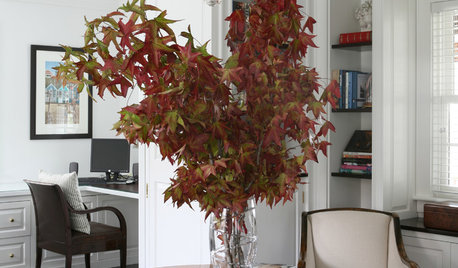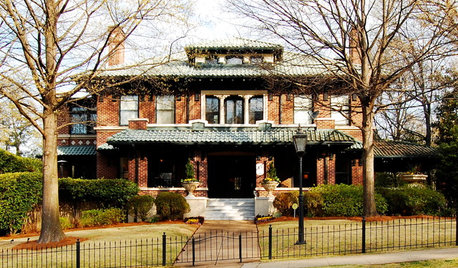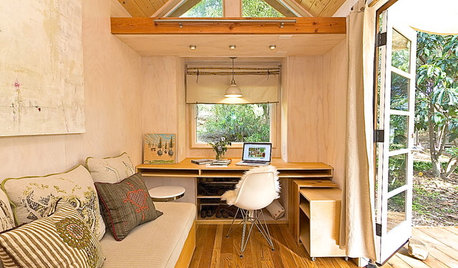yellow leaves of first real leaves on seedlings
kate_rose
19 years ago
Related Stories

FALL GARDENING5 Ways to Put Fall Leaves to Work in Your Garden
Improve your soil and yard the organic way with a valuable garden booster that grows on trees
Full Story
DECORATING GUIDES9 Easy Ways to Decorate With Autumn Leaves
Give your home a burst of color that can be used Halloween through Thanksgiving
Full Story
REMODELING GUIDESInterior Brick: Paint it or Leave It?
Here's how to know if covering that brick is a sin or solution
Full Story
LAUNDRY ROOMSRoom of the Day: The Laundry Room No One Wants to Leave
The Hardworking Home: Ocean views, vaulted ceilings and extensive counter and storage space make this hub a joy to work in
Full Story
ARCHITECTUREStates of Style: Alabama’s Icons Leave Their Mark
In the first of a new series, discover the natural beauty, the architectural icons and some of our favorite homes deep in the heart of Dixie
Full Story
GARDENING GUIDESWhat's Wrong With My Plant? Leaves Often Hold the Clues
Learn how to identify common plant ailments by reading their leaves
Full Story
DECLUTTERINGDownsizing Help: Choosing What Furniture to Leave Behind
What to take, what to buy, how to make your favorite furniture fit ... get some answers from a homeowner who scaled way down
Full Story
LIFEYou Said It: ‘I’m Never Leaving’ and More Houzz Quotables
Design advice, inspiration and observations that struck a chord this week
Full Story
GARDENING GUIDESSeeds or Seedlings? How to Get Your Garden Started
Growing delicious herbs and vegetables starts with knowing your goals and when you want to plant
Full Story
CHRISTMASReal vs. Fake: How to Choose the Right Christmas Tree
Pitting flexibility and ease against cost and the environment can leave anyone flummoxed. This Christmas tree breakdown can help
Full StorySponsored
More Discussions






kdjoergensen
kate_roseOriginal Author
Related Professionals
Forest Acres Landscape Architects & Landscape Designers · Hyattsville Landscape Architects & Landscape Designers · Quincy Landscape Architects & Landscape Designers · Dixon Landscape Contractors · Rancho Santa Margarita Landscape Contractors · Fish Hawk Handyman · Bellmawr Fence Contractors · Fairmount Fence Contractors · Hutto Fence Contractors · Malibu Fence Contractors · North Potomac Fence Contractors · Silver Spring Fence Contractors · Towson Fence Contractors · Zachary Fence Contractors · La Verne Fence Contractorsmaineman
kate_roseOriginal Author
geol